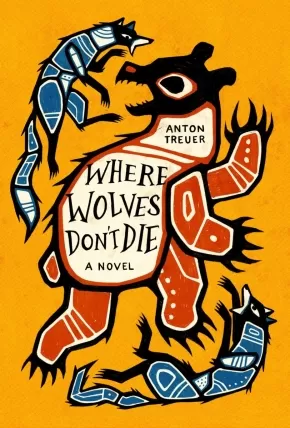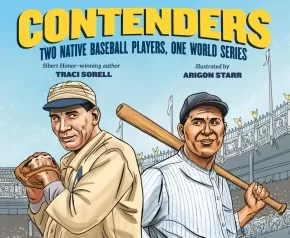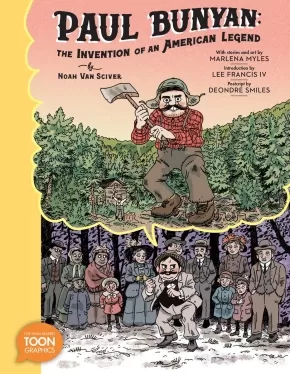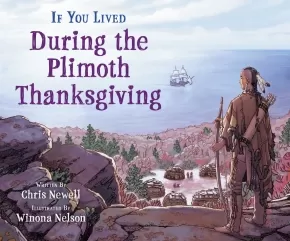
Minnesota Chippewa Tribe
1
-
12
of
12 Results;
Sort By
All the Stars in the Sky
$27.99
Format:
Hardcover
Text Content Territories:
Indigenous American; Native American; Cherokee;
ISBN / Barcode: 9781665931373
Synopsis:
Synopsis:
Last Stop on Market Street meets We Are Grateful: Otsaliheliga in this sweet, bighearted picture book about a young boy who learns the Cherokee lesson of gadugi—how working together and helping each other makes the whole community stronger.
When eager Clay asks his elisi (grandmother) for help to be named star of the week at school, he’s surprised by her answer: No one person is more important than his family and his community. But is Clay still important at all?
This contemplative exploration of community, individualism, and responsibility—accentuated with traditional beadwork in the art—is a moving invitation to consider an indigenous perspective of one’s place in the world and how we all light up our sky, together.
Educator Information
Recommended for ages 4 to 8.
Additional Information
40 pages | 11.00" x 8.50" | Hardcover
Faye and the Dangerous Journey: An Ojibwe Removal Survival Story
$13.99
Artists:
Format:
Paperback
Text Content Territories:
Indigenous American; Native American; Anishinaabeg; Ojibwe (Chippewa);
ISBN / Barcode: 9781669086239
Synopsis:
Synopsis:
In the fall of 1850, Faye and her family begin a long, difficult journey with thousands of other Ojibwe people to receive money the U.S. government owes them. But why isn’t the money being delivered to them in Wisconsin, as usual? Why must they walk and canoe all the way to the middle of Minnesota in terrible weather? These are questions Faye asks, but the answers don’t make sense. When her family reaches their destination, Mama is sick, and there is no money as promised. Will Faye and her family make it back home? Will there be a home to return to? In this gripping story with nonfiction backmatter—including an author’s note, discussion questions, and more—readers will learn about the traumatic events of the Sandy Lake Ojibwe removal in this Girls Survive historical fiction.
Educator Information
Recommended for ages 8 to 12.
Additional Information
112 pages | 5.25" x 7.50" | Paperback
The Ojibwe: People, Culture, and History
$11.99
Format:
Paperback
Text Content Territories:
Indigenous American; Native American; Anishinaabeg; Ojibwe (Chippewa);
ISBN / Barcode: 9798875208539
Synopsis:
Synopsis:
Spirited powwows, close family ties, and a deep connection to the land—that’s the Ojibwe Nation. In this captivating nonfiction book for young readers, discover more about the people, places, and customs that shape Ojibwe life across the Great Lakes region. Uncover how the Ojibwe people continue to thrive by preserving their language, celebrating traditions, and gathering at powwows, where drumming, dancing, and storytelling keep their culture alive. Through interactive activities and engaging features—including maps, timelines, recipes, and crafts—Ojibwe author Kim Sigafus provides young learners with meaningful insights into the past, present, and future of this enduring culture.
Educator & Series Information
Recommended for ages 8 to 11.
This book is part of the Indigenous Peoples series.
Additional Information
32 pages | 7.00" x 9.00" | Paperback
Stitches of Tradition (Gashkigwaaso Tradition)
$24.99
Format:
Hardcover
ISBN / Barcode: 9780063218680
Synopsis:
Synopsis:
“Noozhishenh, bimadiziwin,” Nookomis says. “My granddaughter, live a good life.”
An Ojibwe grandmother carefully measures and selects just the right colors of fabric, and her sewing machine hums whirr, whirr, whirr late into the night.
In the morning, her growing granddaughter has a beautiful new ribbon skirt to wear, a reminder of her nookomis and the cultural traditions that stitch together her family with love.
This heartwarming story by Marcie Rendon (Ojibwe), with stunning illustrations by Joshua Mangeshig Pawis-Steckley (Ojibwe), celebrates the power of Indigenous craft and community and weaves together the spirit of resilience, female empowerment, and gratitude for the generations that came before us.
Reviews
A radiant and joyful glimpse at an important Native tradition." — Kirkus Reviews (starred review)
"Tradition and love are the core of this picture book...Ojibwe language is seamlessly woven into the dialogue. The digital art fully saturates the pages, layering textures and colors much like the ribbon skirts, and the palette is buoyant and bright, exuding a celebratory feel." — Bulletin of the Center for Children’s Book"s
Educator Information
Recommended for ages 4 to 8.
Detailed text perfect for read-alouds.
Backmatter includes a glossary of Ojibwa terms, more information on ribbon skirts, including history and significance, and infromation about manoomin (wild rice).
Additional Information
40 pages | 8.50" x 11.00" | Hardcover
Where Wolves Don't Die: A Novel
$28.99
Format:
Hardcover
Text Content Territories:
Indigenous Canadian; First Nations; Anishinaabeg; Ojibway; Saulteaux; Nigigoonsiminikaaning First Nation;
ISBN / Barcode: 9781646143818
Synopsis:
Synopsis:
Ezra Cloud hates living in Northeast Minneapolis. His father is a professor of their language, Ojibwe, at a local college, so they have to be there. But Ezra hates the dirty, polluted snow around them. He hates being away from the rez at Nigigoonsiminikaaning First Nation. And he hates the local bully in his neighborhood, Matt Schroeder, who terrorizes Ezra and his friend Nora George.
Ezra gets into a terrible fight with Matt at school defending Nora, and that same night, Matt’s house burns down. Instantly, Ezra becomes a prime suspect. Knowing he won’t get a fair deal, and knowing his innocence, Ezra’s family sends him away to run traplines with his grandfather in a remote part of Canada, while the investigation is ongoing. But the Schroeders are looking for him…
From acclaimed author Anton Treuer comes a novel that’s both taut thriller and a raw, tender coming-of-age story, about one Ojibwe boy learning to love himself through the love of his family around him.
Reviews
“Where Wolves Don't Die will lift you up and not let you down. Anton Treuer knows how to tell a gripping story and the suspense doesn't let up for a single page. Along the way you'll learn about Ojibwe lifeways, languages, sharp jokes, gentle humor, and how to keep romantic love alive from youth to old age. I couldn't put this book down until I'd finished it, and then, I could not forget it.”—Louise Erdrich, Pulitzer Prize winner and owner of Birchbark Books
“I am in awe, crying and smiling at the same time. Where Wolves Don’t Die is a love letter to our Ancestors.”—Angeline Boulley
“Treuer immerses the reader in Ojibwe culture in this suspenseful novel of wilderness survival… An essential illumination of contemporary Indigenous life.”—Booklist
Educator Information
Recommended for ages 12 to 18.
Set in the Canadian wilderness, Where Wolves Don't Die is a thrilling YA coming-of-age novel that has garnered praise from Angeline Boulley, Booklist, and more. A suspenseful adventure tale for teens.
Additional Information
256 pages | 5.50" x 8.25" | Hardcover
Contenders: Two Native Baseball Players, One World Series
$26.99
Artists:
Format:
Hardcover
Text Content Territories:
Indigenous American; Native American; Anishinaabeg; Ojibwe (Chippewa); Minnesota Chippewa Tribe; White Earth Band of Ojibwe; Cahuilla;
ISBN / Barcode: 9780593406472
Synopsis:
Synopsis:
The true story of John Meyers and Charles Bender, who in 1911 became the first two Native pro baseball players to face off in a World Series, teaches important lessons about resilience, doing what you love in the face of injustice, and the fight for Native American representation in sports.
Charles Bender grew up on the White Earth Reservation in Northwestern Minnesota. John Meyers was raised on the Cahuilla reservation in Southern California. Despite their mutual respect for each other's talents and their shared dedication to Native representation in baseball, the media was determined to pit them against each other.
However, they never gave up on their dreams of being pro baseball players and didn’t let the supposed rivalry created by the media or the racism they faced within the stadium stop them. They continued to break barriers and went on to play a combined total of nine championships.
With text by Traci Sorell and illustrations by Arigon Starr that brings these two players to life, the stories of John Meyers and Charles Bender remain an inspiration for achieving and maintaining one’s dreams in the face of prejudice.
Educator Information
Recommended for ages 6 to 9.
Additional Information
48 pages | 11.30" x 9.30" | Hardcover
Paul Bunyan: The Invention of an American Legend
$15.99
Artists:
Format:
Paperback
Text Content Territories:
Indigenous American;
ISBN / Barcode: 9781662665233
Synopsis:
Synopsis:
Did you know that a mainstay of American folk culture was in fact created as an advertising ploy?
Few people realize that Paul Bunyan, the legendary lumberjack, and his blue ox are the product of corporate marketing by a highly industrialized commercial enterprise.
Cartoonist Noah Van Sciver shows us the myth creation as real-life marketing man extraordinaire W.B. Laughead spins ever more wondrous tall tales. Van Sciver's story is bracketed by rich contributions from contemporary Native artists and storytellers with a very different connection to the land that the Bunyan myths often conceal. Readers will see how a lumberjack hero, a quintessential American fantasy, captures the imagination but also serves to paper over the seizure of homeland from First Peoples and the laying bare of America's northern forests. It’s a tall tale with deep roots . . . in profit-making!
Reviews
"The Paul Bunyan tall tale gets felled. . . Readers will come away ready to question what other falsehoods they’ve been fed about the history of marginalized people. . . A heightened sense of scale makes Bunyan practically leap of the page in grandeur. An accessible and important reminder of how easily the truth can be coopted." -- Kirkus Reviews, STARRED
"Enlightening. . . . [A] frank and accessible depiction of the environmental and economic impact of boom-bust industries . . . and how the Bunyan fiction perpetuated these systems." —Publishers Weekly
"The combined cartoon and folk art styles work well to capture the giant lore of Paul Bunyan . . . A mighty attempt to take on a giant topic of forgotten history".--Booklist
“A fast-paced and enjoyable book that captures the cadence and evolution of tall tales in oral history. The bookend contributions by Native authors provide a nuanced and essential critical exploration of the impact of American logging on Native American land.”—SHING YIN KHOR, author of The Legend of Auntie Po, a National Book Award Finalist
"Logging culture may have produced some great stories. But it also cost America, and especially the indigenous people whose land all those trees once stood on, greatly. Both facts are important parts of our history. Van Sciver’s Paul Bunyan tells them both, and he does so in a way that is both potent and fun." – SLJ's Good Comics For Kids
Educator Information
Recommended for ages 7+
Additional Information
48 pages | 7.75" x 10.00" | Paperback
If You Lived During the Plimoth Thanksgiving
$11.99
Format:
Paperback
Text Content Territories:
Indigenous American; Native American; Wampanoag (Wôpanâak);
ISBN / Barcode: 9781338726367
Synopsis:
Synopsis:
What do you know about the thanksgiving feast at Plimoth?
What if you lived in a different time and place? What would you wear? What would you eat? How would your daily life be different?
Scholastic's If You Lived... series answers all of kids' most important questions about events in American history. With a question and answer format, kid-friendly artwork, and engaging information, this series is the perfect partner for the classroom and for history-loving readers.
What if you lived when the English colonists and the Wampanoag people shared a feast at Plimoth? What would you have worn? What would you have eaten? What was the true story of the feast that we now know as the first Thanksgiving and how did it become a national holiday?
Chris Newell answers all these questions and more in this comprehensive dive into the feast at Plimoth and the history leading up to it. Carefully crafted to explore both sides of this historical event, this book is a great choice for Thanksgiving units, and for teaching children about this popular holiday.
Reviews
"A welcome addition to the picture book history collection. ...The text does a remarkable job of giving larger context to the complexity of Indigenous life prior to colonization...This essential book should replace many established titles on the shelf." --School Library Journal (starred review)
"A measured corrective to pervasive myths about what is often referred to as the "first Thanksgiving." ...The lens Newell offers is a Native one, describing how the Wampanoag and other Native peoples received the English rather than the other way around. ...Essential." --Kirkus Reviews (starred review)
"A measured corrective to pervasive myths about what is often referred to as the "first Thanksgiving." ...The lens Newell offers is a Native one, describing how the Wampanoag and other Native peoples received the English rather than the other way around. ...Essential." --Kirkus Reviews (starred review)
Educator Information
Recommended for ages 7 to 10.
Additional Information
96 pages | 9.00" x 7.50" | Paperback
Johnny's Pheasant
$23.99
Artists:
Format:
Hardcover
Text Content Territories:
Indigenous American; Native American;
ISBN / Barcode: 9781517905019
Synopsis:
Synopsis:
An encounter with a pheasant (which may or may not be sleeping) takes a surprising turn in this sweetly serious and funny story of a Native American boy and his grandma
"Pull over, Grandma! Hurry!” Johnny says. Grandma does, and Johnny runs to show her what he spotted near the ditch: a sleeping pheasant. What Grandma sees is a small feathery hump. When Johnny wants to take it home, Grandma tries to tell him that the pheasant might have been hit by a car. But maybe she could use the feathers for her craftwork? So home with Grandma and Johnny the pheasant goes . . .
It’s hard to say who is most surprised by what happens next—Grandma, Johnny, or the pheasant. But no one will be more delighted than the reader at this lesson about patience and kindness and respect for nature, imparted by Grandma’s gentle humor, Johnny’s happy hooting, and all the quiet wisdom found in Cheryl Minnema’s stories of Native life and Julie Flett’s remarkably evocative and beautiful illustrations.
Additional Information
32 pages | 9.50" x 8.50"
Nowhere to Hide
$12.95
Format:
Paperback
Text Content Territories:
Indigenous American; Native American; Anishinaabeg; Ojibwe (Chippewa); Minnesota Chippewa Tribe; White Earth Band of Ojibwe;
ISBN / Barcode: 9781939053213
Synopsis:
Synopsis:
Autumn Dawn is sick of being bullied at school. It's not her fault that she doesn't learn as fast as the other kids or that she speaks a little differently. Her home life isn't much better. Ever since Autumn's dad left, her mother can't cope, so Autumn has to care for her baby brother and do all the housework. Her mother hasn't even noticed the problems her daughter is dealing with.
When Autumn's Ojibwa aunt comes to visit, she recognizes Autumn's dyslexia and speech problems. Can Aunt Jessie build a bridge between mother and daughter and give Autumn the confidence she needs to move past her challenges?
Educator & Series Information
Recommended Ages: 12 to 16
Fry Reading Level: 4
This book is part of the PathFinders series. The PathFinders series of Hi-Lo (high interest, low readability) novels offers the following features:
• Indigenous teen protagonists
• Age-appropriate plots
• 2.5 – 4.5 Reading Level
• Contemporary and historical fiction
• Indigenous authors
The PathFinders series is from an American publisher. Therefore, Indigenous terminology in the PathFinders books is not the same as Canadian Indigenous terminology. This prompts a useful teaching moment for educators in discussing appropriate terminology use in Canada.
This book is part of the Autumn Dawn Series, a subseries of the PathFinders series.
Additional Information
120 pages | 4.50" x 7.00"
Wisdom from our First Nations
$10.95
Format:
Paperback
Text Content Territories:
Indigenous American; Indigenous Canadian;
ISBN / Barcode: 9781927583555
Synopsis:
Synopsis:
In Indigenous cultures, elders serve as a bridge across time: they are connected to the past, they live in the present and they offer wisdom for the future. In these fascinating biographical essays, twelve First Nation and Native American elders share stories from their lives and tell what it was like to live in a time before television, cell phones and video games. Their stories explain how their humble childhoods shaped the adults they became and the lessons they share as elders. All the elders profiled work to ensure that their Native culture is passed down to members of their tribe. Settle in with this book and “listen” to the stories of these elders’ lives. As you take in their history, you just might gain wisdom that could make a difference in your own life.
Educator & Series Information
This book is part of the First Nations Series for Young Readers. Each book is a collection of biographies of First Nations, Métis, and Inuit women and men who are leaders in their fields of work, in their art, and in their communities.
For ages 9-14.
Additional Information
128 pages | 6.00" x 9.00"
Great Writers from our First Nations
$10.95
Format:
Paperback
Text Content Territories:
Indigenous American; Indigenous Canadian;
ISBN / Barcode: 9781926920856
Synopsis:
Synopsis:
A celebration of ten writers who have challenged stereotypes, told history from a perspective often silenced, and entertained millions of readers.
Included is author Louise Erdrich, whose novel Love Medicine was the first in an award-winning series about the lives of several generations of Ojibwa families. Sherman Alexie, author of the semi-autobiographical The Absolutely True Diary of a Part-Time Indian, went on to win the National Book Award. Tomson Highway broke new ground with his play The Rez Sisters. Joseph Boyden based his novel Three Day Road in part on his grandfather’s experience fighting in the First World War. N. Scott Momaday re-wrote the history of the American West with his book House Made of Dawn. Nicola Campbell drew on her family’s experience of residential schools to write the children’s books Shi-shi-etko and Shin-chi’s Canoe. Also included are Marilyn Dumont (A Really Good Brown Girl), Tim Tingle (Walking the Choctaw Road), Joseph Bruchac (Buffalo Song), and Maria Campbell (Half-breed).
The full list of writers profiled:
• Sherman Alexie (Spokane/Coeur d’Alene, Washington) - The Absolutely True Diary of a Part-Time Indian
• Louise Erdrich (Ojibwa, North Dakota) - Love Medicine (the Argus Series)
• Joseph Boyden (Cree/Métis, Ontario) - Three Day Road
• N. Scott Momaday (Kiowa/Cherokee, Oklahoma) - House Made of Dawn
• Marilyn Dumont (Cree/Métis, Alberta) - A Really Good Brown Girl
• Tomson Highway (Cree, Manitoba) - The Rez Sisters
• Joseph Bruchac (Abenaki, New York State) - Buffalo Song
• Maria Campbell (Métis, Saskatchewan) - Halfbreed
• Nicola Campbell (Interior Salish/Métis, Alberta) - Shin-chi’s Canoe
• Tim Tingle (Choctaw, Texas) - Walking the Choctaw Road
Educator & Series Information
This book is part of the First Nations Series for Young Readers. Each book is a collection of biographies of First Nations, Métis, and Inuit women and men who are leaders in their fields of work, in their art, and in their communities.
For ages 9-14.
Additional Information
128 pages | 6.00" x 9.00"
Sort By


















